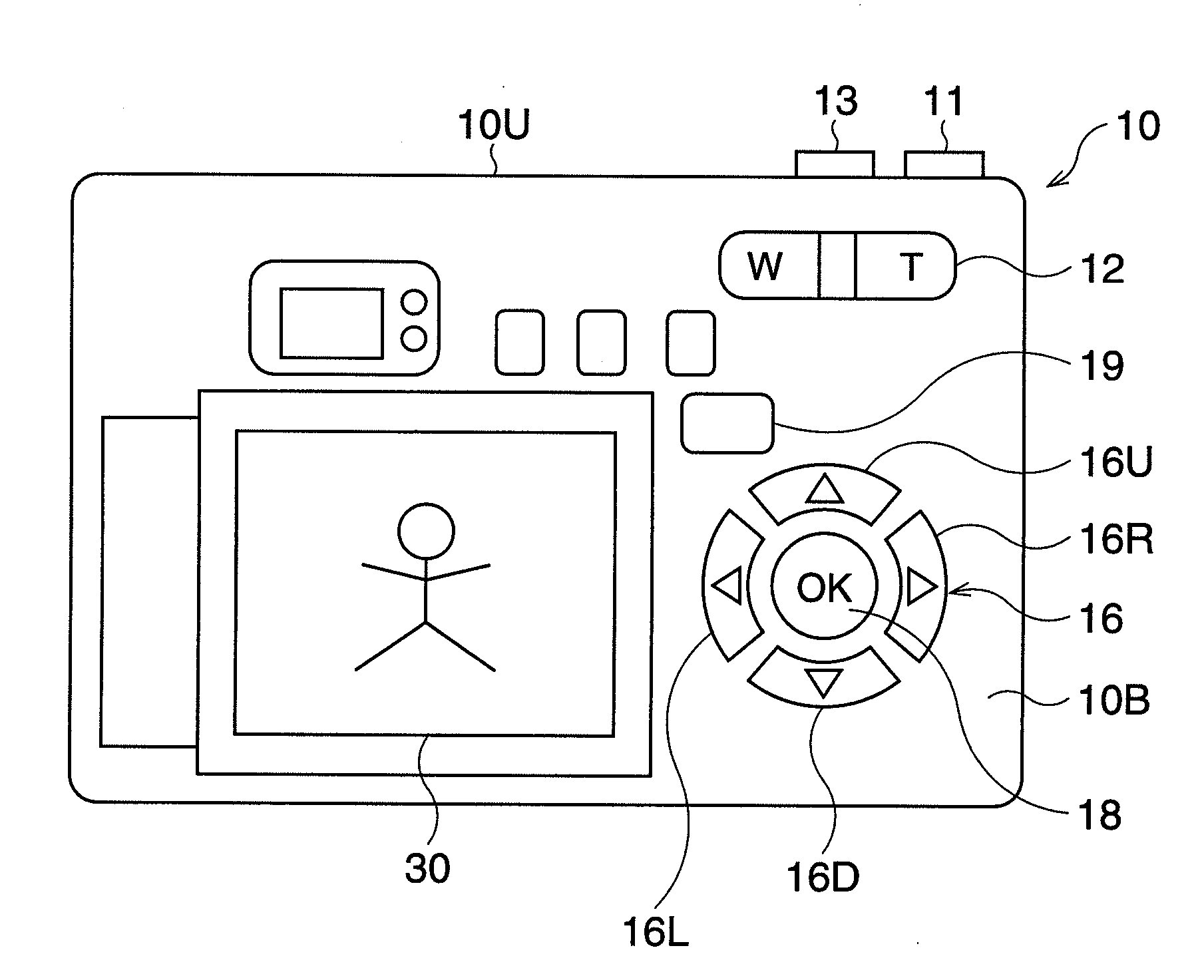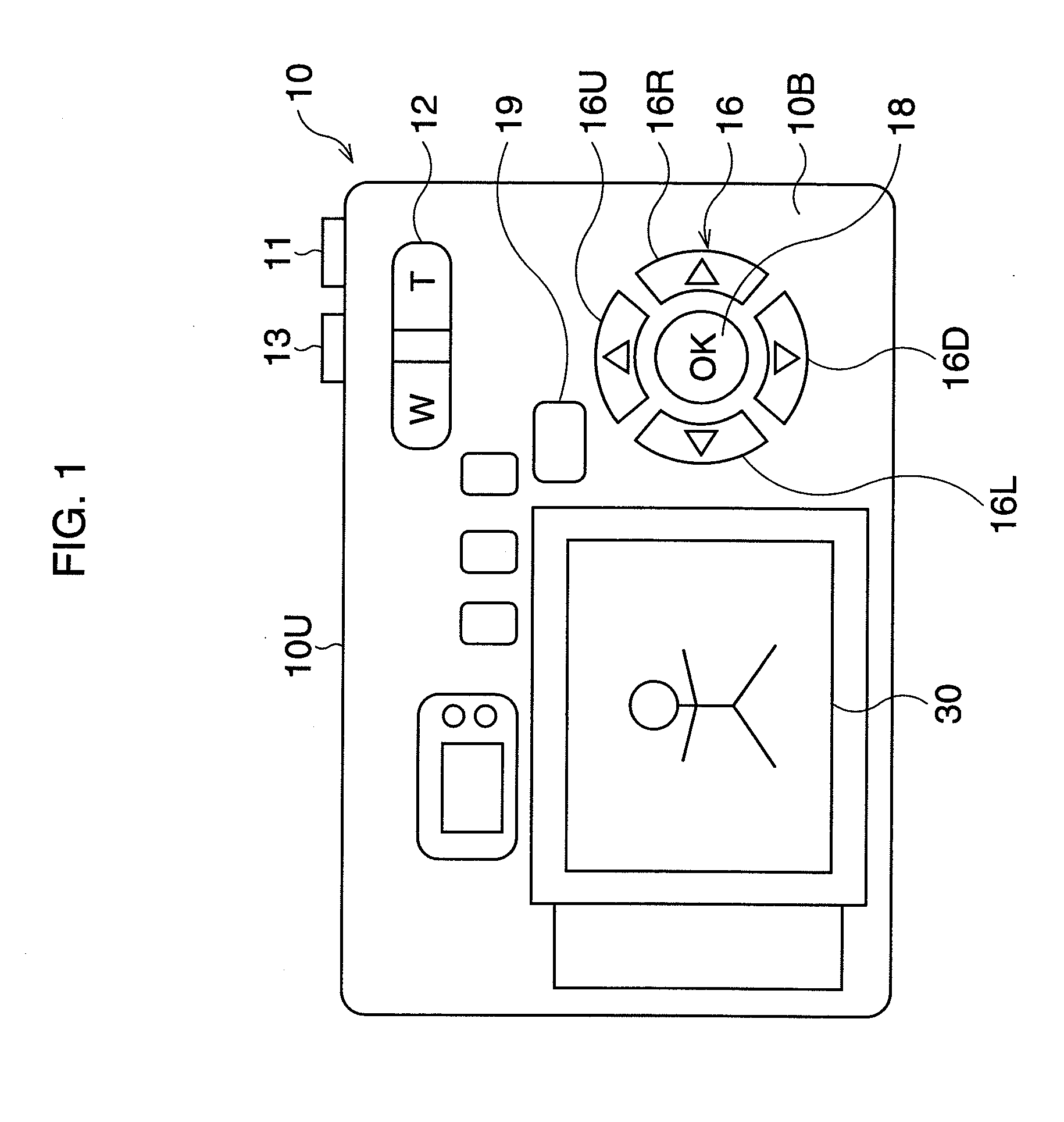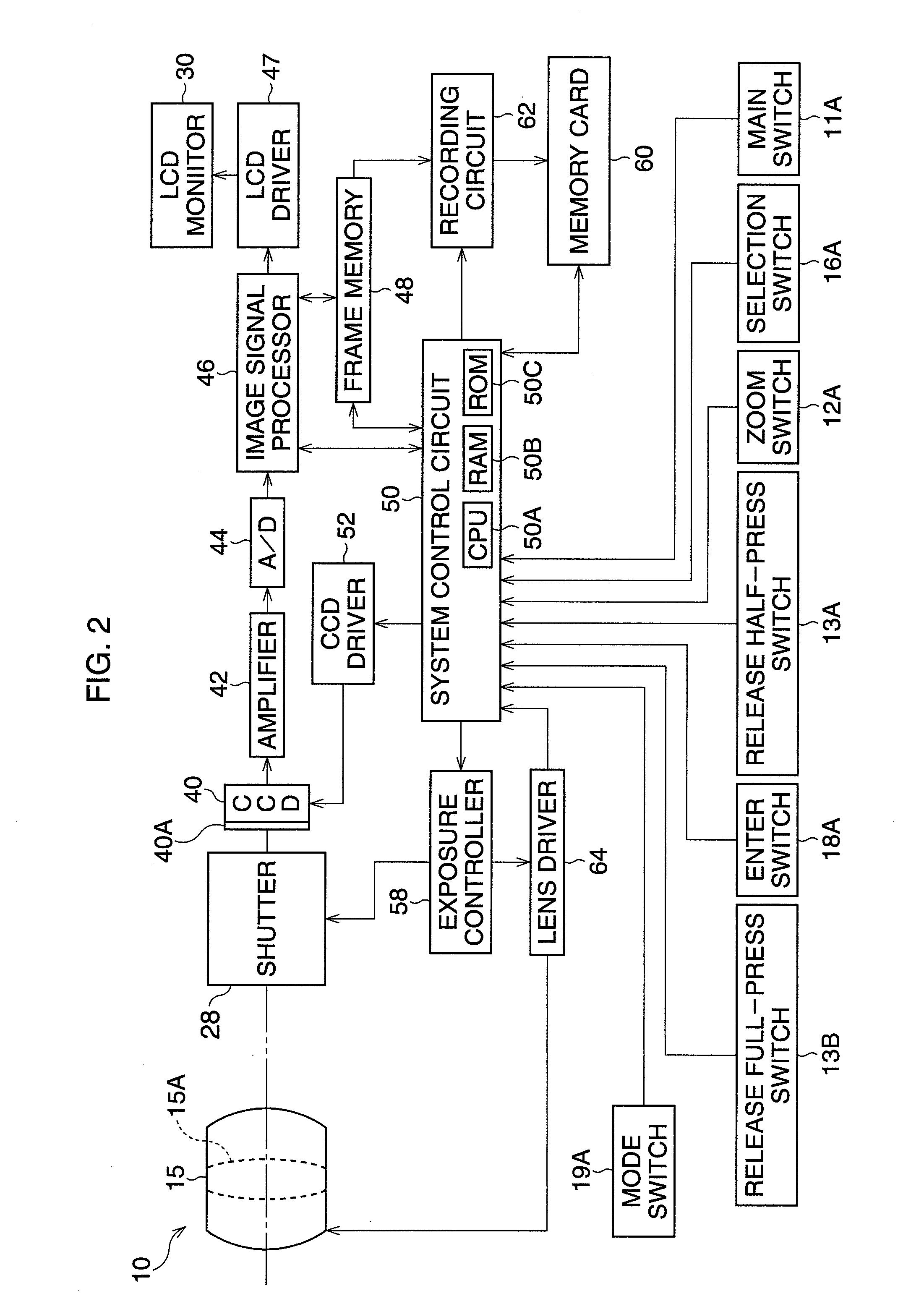Method and apparatus for recording image data
a technology of image data and recording method, which is applied in the field of recording process of image data, can solve the problems of shortening the time necessary for recording image data, requiring compression process and recording process, and increasing the amount of data to be recorded, so as to shorten the time taken for recording process
- Summary
- Abstract
- Description
- Claims
- Application Information
AI Technical Summary
Benefits of technology
Problems solved by technology
Method used
Image
Examples
first embodiment
[0025]FIG. 1 is the rear view of a digital camera according to the
[0026]A digital camera 10 has an LCD monitor 30 on a back surface 10B, and a view finder 22 above the LCD monitor 30. Further, a series of buttons are provided on the back surface 10B. Herein, a zoom button 12; a cross-shaped button 16 composed of an up button 16U, a down button 16D, a right button 16R, and a left button 16L; an OK button 18; and a mode button 19, are provided. The mode button 19 is operated to switch between a plurality of modes including a photographing (shooting)-mode, a menu-mode, and a replay-mode.
[0027]A main button 11 and a release button 13 are provided on an upper surface 10U. The camera 10 is turned ON by depressing the main-button 11, and an object image is recorded by operating the release button 13. In a lens barrel (not shown) provided on a front surface of the camera 10, a photographing optical system (herein, not shown) is installed.
[0028]In the photographing-mode for selecting the typ...
second embodiment
[0048]FIG. 5 is a flowchart showing the recording process according to the FIG. 6 is a view showing an image divided into a plurality of blocks.
[0049]In Step S201, a part of the original image data (RAW data), which is subjected to the recording process, is extracted. The image shown in FIG. 6 is divided into the plurality of blocks B, each block being composed of a plurality of predetermined pixels. Herein, a down sampling process is carried out on the basis of each block B, wherein blocks are extracted alternately in the horizontal and vertical directions, respectively. Thus, one out of two blocks among the horizontally-arrayed blocks, and one out of two blocks among the vertically-arrayed blocks, are extracted. In FIG. 6, the extracted blocks are represented by a slash. The part of image data to be extracted is read from the frame memory 48, and is fed to the recording circuit 62.
[0050]In Step S202, the Huffman coding is carried out on the extracted partial image data so that en...
PUM
 Login to View More
Login to View More Abstract
Description
Claims
Application Information
 Login to View More
Login to View More - R&D
- Intellectual Property
- Life Sciences
- Materials
- Tech Scout
- Unparalleled Data Quality
- Higher Quality Content
- 60% Fewer Hallucinations
Browse by: Latest US Patents, China's latest patents, Technical Efficacy Thesaurus, Application Domain, Technology Topic, Popular Technical Reports.
© 2025 PatSnap. All rights reserved.Legal|Privacy policy|Modern Slavery Act Transparency Statement|Sitemap|About US| Contact US: help@patsnap.com



